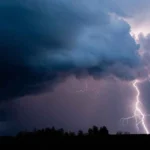
Nestled in the heart of Siberia, Lake Baikal stands as one of the world’s most extraordinary natural wonders. With a history stretching back millions of years, this ancient freshwater lake possesses a unique combination of numerical superlatives and fascinating historical trivia. From its unparalleled depth and pristine water clarity to its role in geological research and cultural significance, Lake Baikal’s story is one of both scientific marvel and natural beauty. In this exploration, we uncover 25 historical facts and numerical curiosities that illuminate the awe-inspiring character of this pristine Siberian jewel.
Age of Lake Baikal: Lake Baikal’s age is a testament to its geological significance. It is estimated to be around 25 million years old, making it one of the world’s most ancient lakes. This remarkable age is due to the lake’s formation during the rift between tectonic plates. Over millions of years, the unique geological processes in the region resulted in the creation of this awe-inspiring body of water, with its own distinct ecosystem and a history stretching back to a time long before humans existed.
Depth of Lake Baikal: Lake Baikal’s staggering depth of approximately 5,387 feet (1,642 meters) is awe-inspiring. To put this into perspective, it is not only the deepest freshwater lake but also rivals the depth of some of the world’s oceans. The extreme depth has created a unique environment, with various habitats and ecosystems at different depths, each hosting their own distinct forms of life.
Volume of Water: The lake’s volume of approximately 23,600 cubic kilometers of water is an astonishing figure. It contains more water than all the North American Great Lakes combined, emphasizing its role as a massive freshwater reservoir. This volume is vital not only for the surrounding ecosystem but also as a significant source of freshwater in the region.
Location: Situated in Siberia, Russia, Lake Baikal’s location in the heart of Siberia is both remote and breathtaking. Its remote location, surrounded by vast wilderness and mountains, adds to its allure. This isolated setting, nestled amidst Siberia’s stunning natural landscapes, contributes to its pristine and untouched quality.
Size: With dimensions of approximately 395 miles (636 kilometers) in length and 49 miles (79 kilometers) in width, Lake Baikal ranks among the largest freshwater lakes in the world by surface area. Its sheer size allows for diverse ecosystems and a multitude of habitats along its expansive shores.
Formation: Lake Baikal’s formation is a geological marvel. It came into existence due to the divergence of tectonic plates. The Eurasian and Amurian plates slowly pulled apart, creating a rift where the lake now rests. This geological history provides a window into the dynamic processes that shape the Earth’s surface over vast periods of time.
Biodiversity: The biodiversity of Lake Baikal is awe-inspiring. It is a UNESCO World Heritage Site and is home to a rich variety of plants and animals, many of which are found nowhere else on the planet. Its unique ecosystem, shaped by its ancient age and isolation, has given rise to an incredible array of species, from microscopic plankton to the famous Baikal seal. Scientists continue to study the lake’s remarkable biodiversity, which offers valuable insights into the natural world.
Endemic Species: The Baikal seal, or nerpa, stands out as one of the most fascinating inhabitants of the lake. This freshwater seal is not only a symbol of Lake Baikal but also a testament to the lake’s biological distinctiveness. The presence of this species highlights the lake’s status as an evolutionary hotspot, with life forms that have adapted uniquely to its conditions over millennia.
Water Clarity: Lake Baikal’s exceptional water clarity, with visibility reaching up to 130 feet (40 meters) in certain areas, is a testament to its pristine condition. The crystal-clear waters allow for a remarkable view of the lake’s underwater landscapes, and this feature has made it an appealing destination for divers and researchers interested in exploring its depths.
Water Purity: The high water purity of Lake Baikal is a crucial aspect of its allure. This level of purity is rare among large bodies of water and is a result of the lake’s isolation and relatively low human impact. Its pristine water quality supports the diverse life forms that inhabit its depths and its reputation as one of the cleanest large lakes on Earth.
Depth Variation: Lake Baikal’s pronounced depth variations are a remarkable feature of the lake. With a maximum depth of 5,387 feet (1,642 meters) and an average depth of 2,442 feet (744 meters), it exhibits an incredible range in underwater topography. This variation is due to the tectonic processes that formed the lake and created its complex geological structure. The lake’s diverse depths support various species of aquatic life, each adapted to specific ecological niches.
Surrounding Mountains: The Siberian Mountains that encircle Lake Baikal are a dramatic and imposing feature of the landscape. With heights exceeding 6,560 feet (2,000 meters) in some areas, they create a breathtaking backdrop to the lake’s shores. The contrast between the deep, clear waters of the lake and the rugged mountain terrain contributes to the lake’s scenic beauty and adds to the allure of the region.
Thermal Springs: Lake Baikal is dotted with thermal springs that add an intriguing dimension to its ecosystem. Some of these springs remain unfrozen even during the harsh Siberian winter, providing warmth and unique microenvironments for certain species. The presence of these thermal springs in such a cold climate underscores the geological activity in the area.
Siberian Tribes: The Buryat and Evenki people, indigenous to the region surrounding Lake Baikal, have lived here for centuries. Their traditional lifestyles have been closely intertwined with the lake’s resources, including fishing, hunting, and herding. These indigenous cultures have a deep connection to the lake and have contributed to its rich cultural heritage.
Human Settlements: Along the shores of Lake Baikal, several human settlements, including the city of Irkutsk and various towns and villages, have developed over time. These communities rely on the lake for their livelihoods, with fishing and tourism being prominent economic activities. The lake’s influence on the lives of those who live around it is a central theme in the region’s cultural history.
Tourism: Lake Baikal has become a popular tourist destination, drawing visitors from around the world. Tourists are attracted by the lake’s stunning natural beauty, unique wildlife, and opportunities for activities like hiking, boating, and wildlife viewing. The rise in tourism has brought attention to the importance of preserving the lake’s ecosystem and the need for responsible and sustainable tourism practices.
Trans-Siberian Railway: The Trans-Siberian Railway, one of the world’s longest railway lines, runs in proximity to the southern shore of Lake Baikal. This railway offers passengers breathtaking views of the lake’s pristine waters and the surrounding landscapes. The railway journey across Siberia provides travelers with an unforgettable experience of Lake Baikal’s grandeur.
Environmental Protection: Conservation efforts are in place to protect Lake Baikal’s fragile ecosystem. These efforts include initiatives to combat pollution, overfishing, and habitat degradation. The lake’s unique biodiversity and ecological significance have led to its designation as a World Heritage Site and a strong commitment to preserving its natural values.
Ice Thickness: During the winter, the surface of Lake Baikal can freeze to a thickness of up to 3.3 feet (1 meter). This remarkable ice formation supports various activities, including ice skating, ice fishing, and the annual Baikal Ice Marathon, which sees participants run on the frozen surface.
Oldest Freshwater Lake: Lake Baikal’s status as one of the world’s oldest freshwater lakes is a testament to its endurance over geological timescales. Its immense age has allowed it to foster unique ecosystems and geological formations. Its ancient history is a source of fascination for scientists and a point of pride for those who consider it one of Earth’s most exceptional natural wonders.
Ice Marathon: The “Baikal Ice Marathon” is an annual event that showcases the extraordinary natural phenomenon of Lake Baikal’s frozen surface. Participants from around the world gather to run either a full marathon (42 kilometers) or a half marathon (21 kilometers) on the thick ice during the winter months. The marathon not only provides a unique sporting experience but also draws attention to the lake’s remarkable ability to freeze solid in the cold Siberian winter.
Drainage Basin: Lake Baikal’s extensive drainage basin covers an area of approximately 569,700 square kilometers. This vast watershed encompasses forests, mountains, and numerous rivers and streams that feed the lake with freshwater. It plays a crucial role in maintaining the lake’s water levels and ecological balance.
Fish Species: Lake Baikal is home to over 2,500 species of plants and animals, including several species of fish. The omul, a type of salmon, is one of the most well-known fish species in the lake. The diversity of fish species in Lake Baikal contributes to the lake’s status as a biological treasure trove, attracting researchers and scientists interested in studying its unique aquatic life.
Records of Cold: The extreme cold experienced around Lake Baikal during the winter months is a notable feature. Temperatures can drop as low as -40°F (-40°C) in some areas. The lake’s ability to maintain liquid water even in such frigid conditions is a testament to its incredible depth and thermal characteristics.
Geological Significance: Beyond its stunning natural beauty, Lake Baikal holds immense geological importance. It offers a window into the Earth’s tectonic evolution and processes, making it an invaluable site for geological research. The lake’s formation and continued existence are intricately tied to the dynamic forces that shape our planet, and it has provided a wealth of knowledge to geologists and scientists over the years. Its geological history is as captivating as its natural beauty, making it an ideal destination for those interested in the Earth’s deep past.








